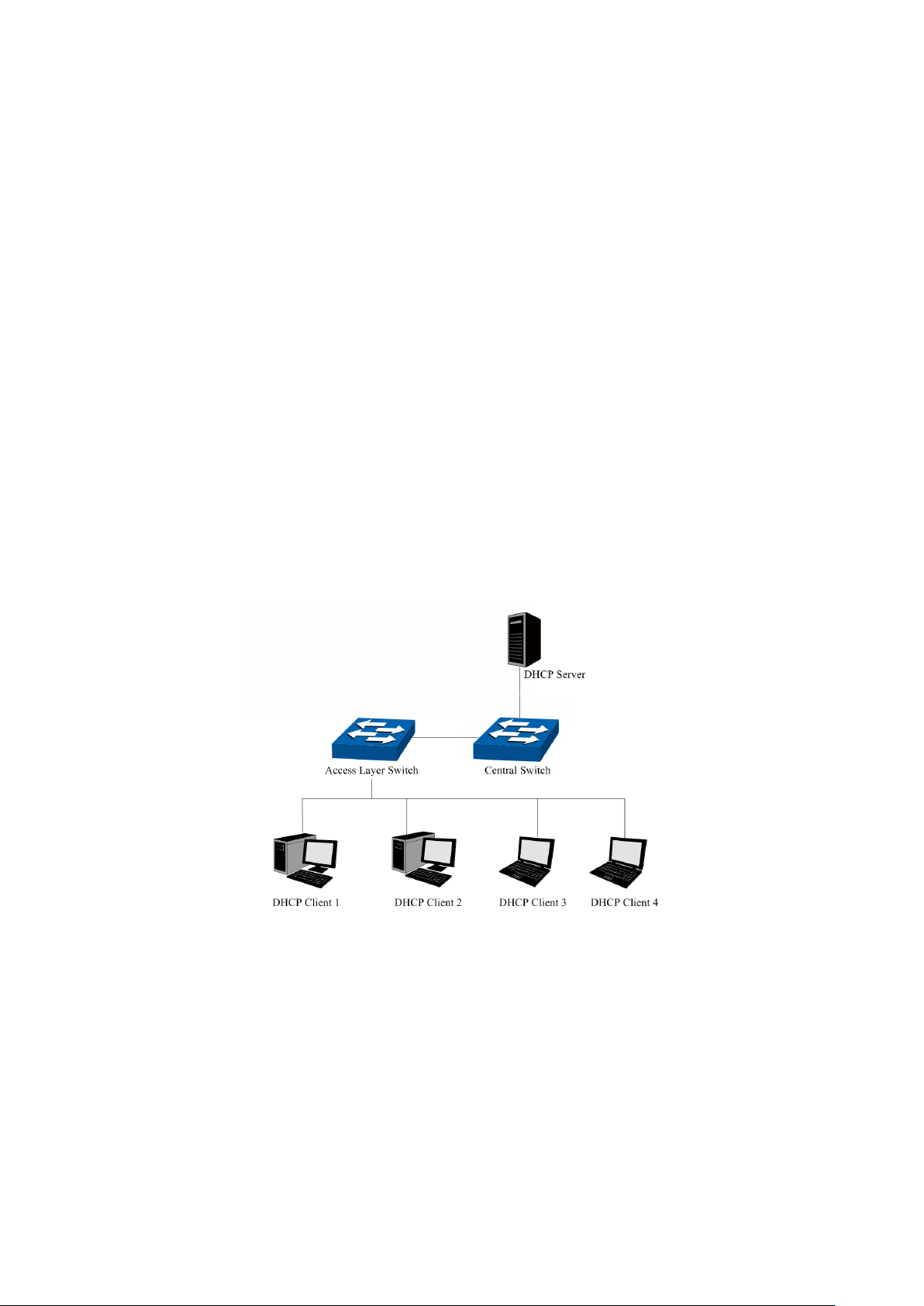Loading ...
Loading ...
Loading ...

Source:
Displays the source of the entry.
Collision:
Displays the Collision status of the entry.
• Warning:
Indicates that the collision may be caused by
the MSTP function.
• Critical:
Indicates that the entry has a collision with the
other entries.
12.2 DHCP Snooping
Nowadays, the network is getting larger and more complicated. The amount of the PCs always
exceeds that of the assigned IP addresses. The wireless network and the laptops are widely
used and the locations of the PCs are always changed. Therefore, the corresponding IP
address of the PC should be updated with a few configurations. DHCP (Dynamic Host
Configuration Protocol), the network configuration protocol optimized and developed basing
on the BOOTP, functions to solve the above mentioned problems.
DHCP Working Principle
DHCP works via the “Client/Server” communication mode. The Client applies to the Server for
configuration. The Server assigns the configuration information, such as the IP address, to the
Client, so as to reach a dynamic employ of the network source. A Server can assign the IP
address for several Clients, which is illustrated in the following figure.
Figure 12-5 Network diagram for DHCP-snooping implementation
For different DHCP Clients, DHCP Server provides three IP address assigning methods:
(1) Manually assign the IP address: Allows the administrator to bind the static IP address to
the specific Client (e.g.: WWW Server) via the DHCP Server.
(2) Automatically assign the IP address: DHCP Server assigns the IP address without an
expiration time limitation to the Clients.
(3) Dynamically assign the IP address: DHCP Server assigns the IP address with an
expiration time. When the time for the IP address expired, the Client should apply for a
new one.
153
Loading ...
Loading ...
Loading ...